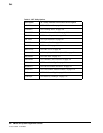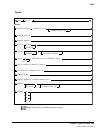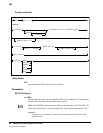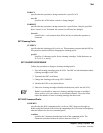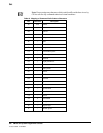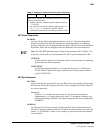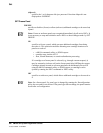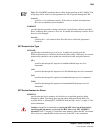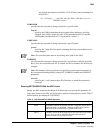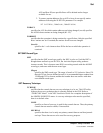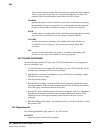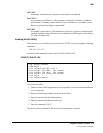
310 VM/HSC 6.0 System Programmer’s Guide
1st ed., 6/30/04 - 312579601
• Restart the HSC on the host.
• Enter the RECover host-id FORCE operator command.
SET ENQ/DEQ/RESERVE QNAME
MAJNAME
specifies that the ENQ/DEQ/RESERVE QNAME is to be set This parameter
requires that the HSC on all systems be shut down before changing the QNAME.
(qname)
specifies a 1- to 8-character QNAME. The QNAME is blank padded on the
right. The name should conform to the requirements for a QNAME. If any hosts
are MVS hosts, to prevent conflicts with the operating system, the QNAME
should not start with ‘‘SYSA’’ through ‘‘SYSZ.’’ Since the HSC is authorized,
the ‘‘SYSA’’ through ‘‘SYSZ’’ names would be allowed, but deadlock may
result.
SET New Host
NEWHOST
specifies that a new host is to be added. The new host to be added cannot exceed the
maximum limitation of 16 hosts.
(newhost)
specifies a 1- to 8-character host ID which also serves as the SMF system ID for
JES2 or the main processor name for JES3. newhost cannot already be defined
in the CDS.
Note: You must delimit the HOSTID with quotes when this ID is in lower case.
LIKEHOST
specifies that an existing configuration, as currently defined in the LIBGEN, is to be
used for the new host. Settings used include:
• SLILIBRY NNLBDRV (nonlibrary drive esoteric)
• SLIACS ACSDRV (ACS drive esoteric)
• SLISTATN ADDRESS (ACS 3270 station addresses)
• SLIDRIVS ADDRESS (drive addresses).
(model-host)
specifies a 1- to 8-character host ID.
SET Nonlibrary Drive Esoteric
NNLBDRV
specifies that the nonlibrary drive esoteric is being set. The change does not take
effect until the relevant HSC(s) is(are) recycled. A relevant HSC is one that resides
in the host specified in FORHOST. If FORHOST is omitted, all HSCs are relevant
because the operation is not restricted to a specific host.
Set



